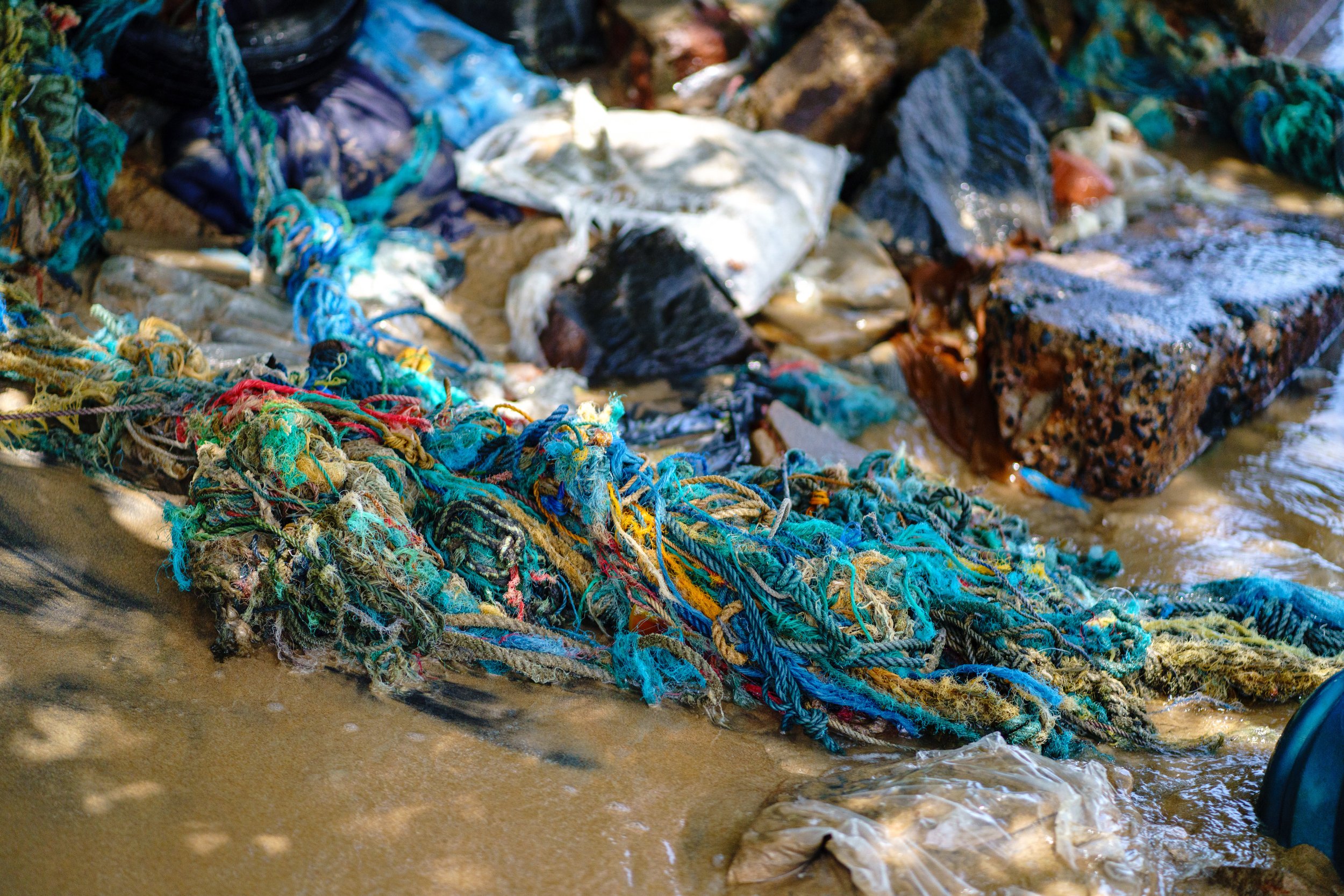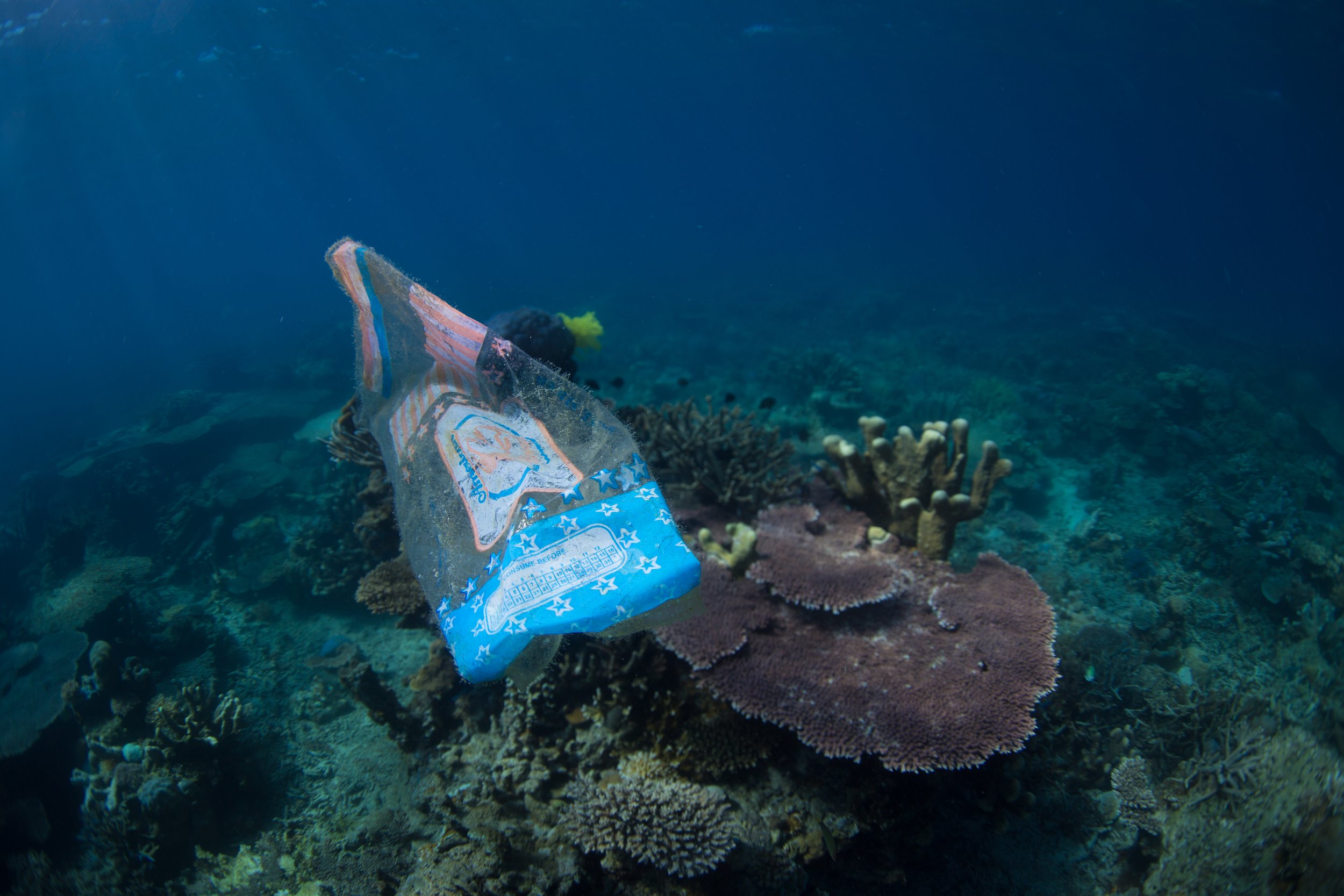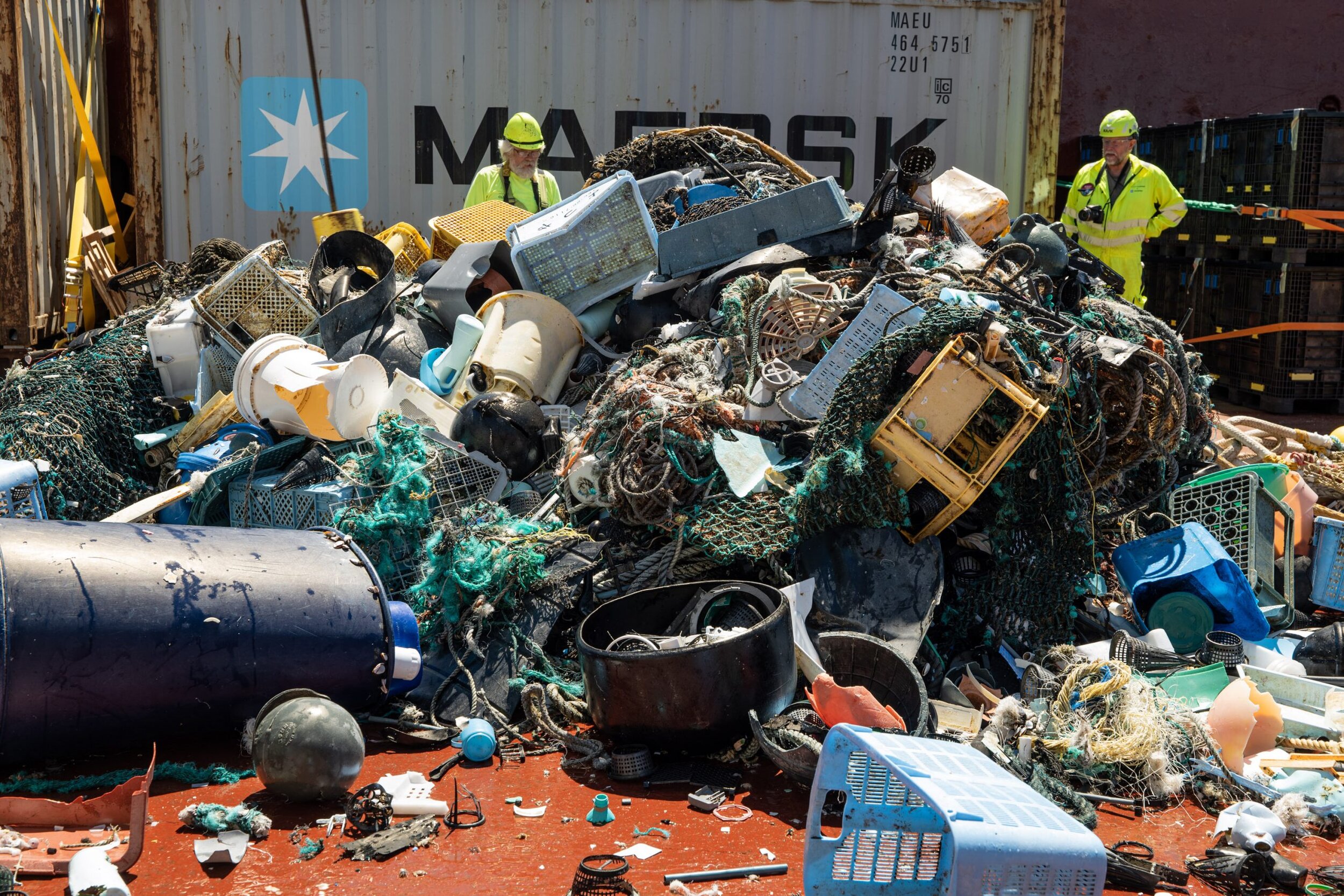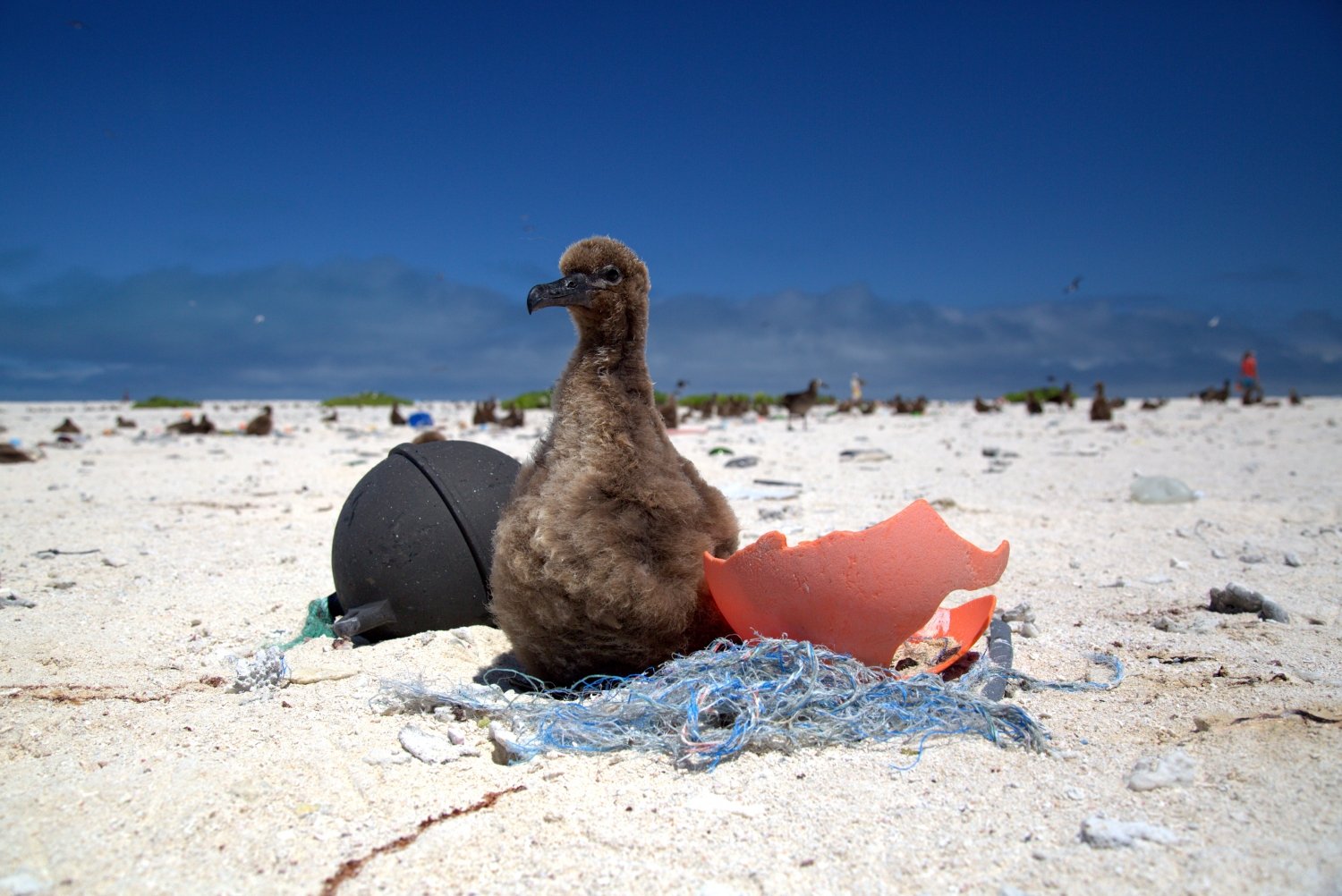ocean plastic solutions: cleaning it up or turning off the tap
Over 400 million tonnes of plastic are currently produced annually, about 750 tonnes of virgin plastic every minute of every day. Based on production and waste management figures since the 1950s, an estimated 150 million tonnes of plastic have already entered the ocean, somewhere between 9 and 14 million tonnes every year. About 70% of this is estimated to be packaging, 13% originates with the fishing industry and the remaining 17% consists of primary microplastics (microfibres and microbeads).
In order to combat ocean plastic we need to take a dual approach, by both turning off the tap at the source of the problem and by cleaning up what has already accumulated. Preventive and curative measures should be taken together and quickly.
Switching off the tap involves a multi-faceted approach: putting a cap on the production and use of virgin plastic, implementing a strong regulatory policy to reduce the use of plastics, moving away from single-use plastic products, substituting plastic with alternative materials, encouraging new design, improving collection and recycling possibilities, and adopting a circular economy approach, accepting that plastic is a valuable material that should be recycled and reused so that zero waste is created and no plastic escapes into the environment.
In 2022, the United Nations Environmental Assembly adopted a resolution to draft a plastic pollution treaty - aiming to do so by the end of 2024, working with governments, plastic producers, waste management societies, civil society and NGOs to establish global policy to stop the flow of plastic into the ocean.
Cleaning it up also requires a variety of approaches using nets, trawls, vacuums, booms, drones, robots and many pairs of hands, depending on the location of the waste. Removing large items of plastic floating in the ocean necessitates a completely different technology to that used for collecting waste which is choking a river, trapping microplastics in the water column, or picking up nurdles on a beach. How quickly we act is of the essence: as times passes, every piece of plastic which is already in the ocean is in the process of breaking up into secondary microplastics, the smaller they become, the harder to capture.

Soeren Funk/Ocean Image Bank

Vincent Kneefel/Ocean Image Bank

Angela Compagnone/Unsplash

The Ocean Cleanup
While we know roughly how much plastic has been released into the environment, the real conundrum is working out where this plastic has accumulated. Despite numerous research projects we are still left with the mystery of the missing ocean plastic - the discrepancy between what is produced and what has been found leaves about 99% of the 150 million tonnes unaccounted for.
We know that the path of the vast majority of ocean plastic begins on land. It is thought that most of it remains close to the coastline, landing on beaches or washing up along the shore, being pushed out to sea and then back in by the waves, tides and currents in an ever-recurring cycle. The Ocean Cleanup estimate that 97% of plastic coming from land-based sources ends up back on our beaches and coasts or sinks to the floor within this region. Only a small amount 'escapes' the cycle and is carried away, out to the open ocean, where much of it is eventually pulled towards the gyres. Here it remains, trapped in the steady waters prevalent within the circular gyres.
The Ocean Cleanup
Looking at the circulation of waste in coastal environments, it is clear that there is quite some delay before the plastic which breaks away from the coastal cycle gets to the gyres. Modular simulations of tides and currents predict that it can take an average of about 7 years to float out to the gyres and these predictions are supported by a comparison of the dates found on plastic items both in coastal regions and in the GPGP. Plastic which is in a relatively good condition, so young plastic (under five years old), tends to be found on beaches and coasts while older, often unidentifiable, plastic is discovered out in the gyres. Dates that have been found on waste from the GPGP show that nearly half the plastic is from the 1990s and older, supporting the theory that it has taken some time to get there. Of note is the fact that ghost gear makes up approximately 86% of the floating macroplastic found in the GPGP. Originating from fishing boats and therefore not necessarily subject to coastal dynamics the lost gear is carried directly by ocean currents towards the gyres (unless of course it sinks to the floor when lost).
The dynamic of plastic settling on the ocean floor depends on a number of factors such as the size and density of the plastic, depth, currents, wave motion, and topography of the ocean floor. The density of the material is the main factor: as the table shows, some plastic types float, other types remain suspended in the water column and heavy-density plastic sinks to the ocean floor. However, other factors also play a role: a PET bottle would, for example, usually sink but if it has air in it and the lid is still on it will float, and while much plastic is naturally buoyant, if it undergoes biofouling (where marine life attaches itself to it) even low-density plastics can lose their buoyancy and sink to the ocean floor. Through ingestion by marine life and incorporation in marine snow, plastic may also find its way to the ocean floor. In deeper environments and under different (aphotic) conditions, degradation may take place more rapidly than on the surface.
Wasser 3.0
Evidence of plastic on the ocean floor is growing. Recent research conducted by the Commonwealth Scientific and Industrial Research Organisation (CSIRO) into sediment at depths of between 1,600 and 3,000 metres in the Great Australian Bight provides a conservative estimate that 14 million tonnes of microplastics already pollute the sediment of the ocean floor there. Studies carried out in the Mediterranean led by the University of Manchester found up to 1.9 million plastic pieces per square metre on the ocean floor. And a research project of the Japan Agency for Marine-Earth Science and Technology (JAMSTEC) looked into the role of the Kuroshio Current in the North-West Pacific in transporting plastic debris and found that the abyssal plain directly beneath the current has a higher concentration of debris. From the limited research available so far, it seems that thermohaline-driven currents control not just the distribution of oxygen and nutrients in the ocean but also microplastics so that nutrient-rich hotspots of biodiversity in deep-sea ecosystems are unfortunately also likely to be hotspots of microplastics.
Scientific research on marine litter is being collected by the Alfred-Wegner-Institute (AWI) in its LITTERBASE data portal. Over a thousand scientific publications documenting the amount, distribution and composition of litter in the ocean and other waterways have already been added to the database. As with any form of research, if no global standard of measurement is in place it is challenging to quantify and compare the problem on a global scale. With this in mind the AWI is trying to establish a norm by which all ocean litter should be measured in order to allow a direct comparison around the world. As the LITTERBASE global map shows, some areas have been the subject of numerous studies while others are yet to be researched, and different depths and zones of the ocean attract differing levels of interest. Little is yet known, for example, about the accumulation of marine litter in the polar regions or about the accumulation of plastic on the ocean floor.







